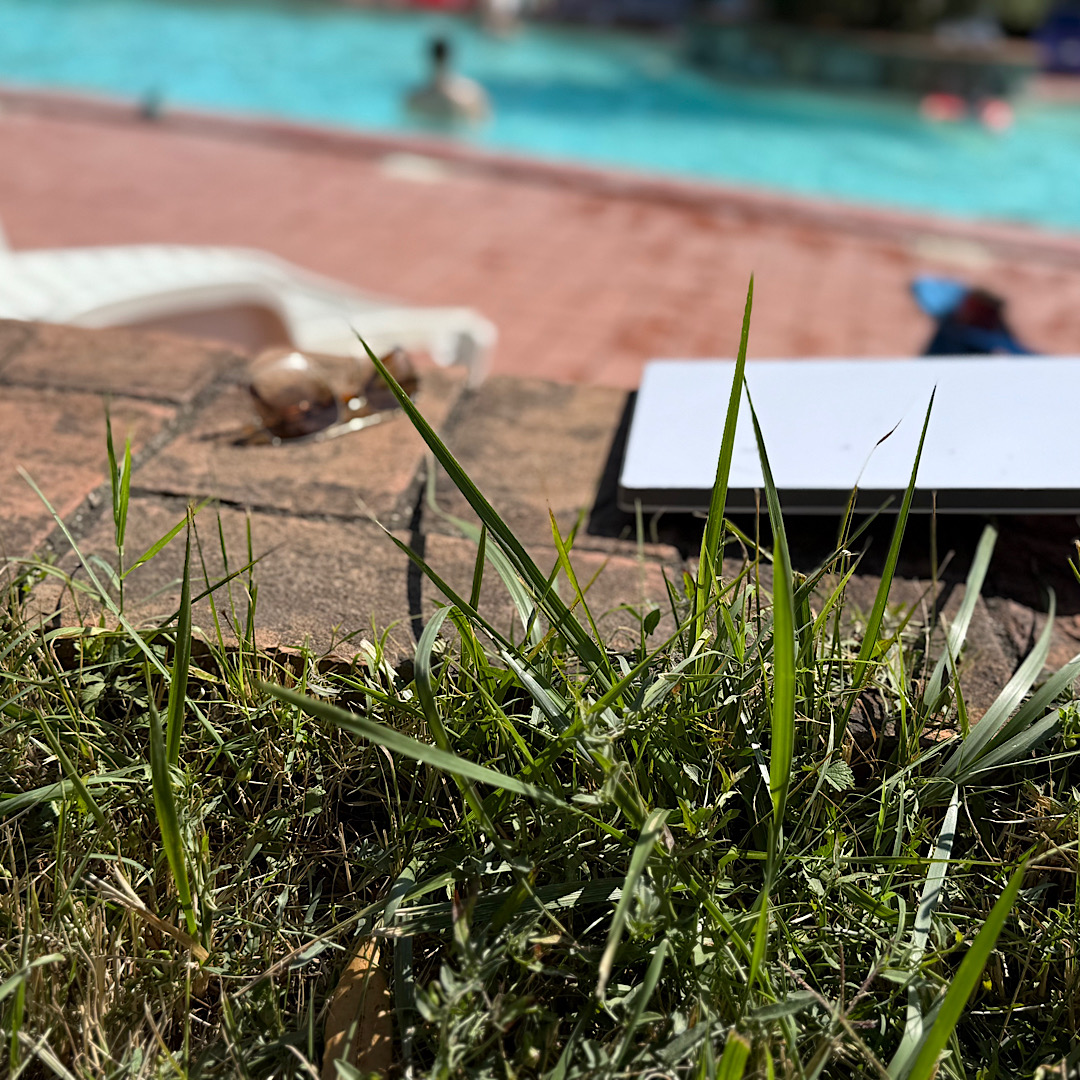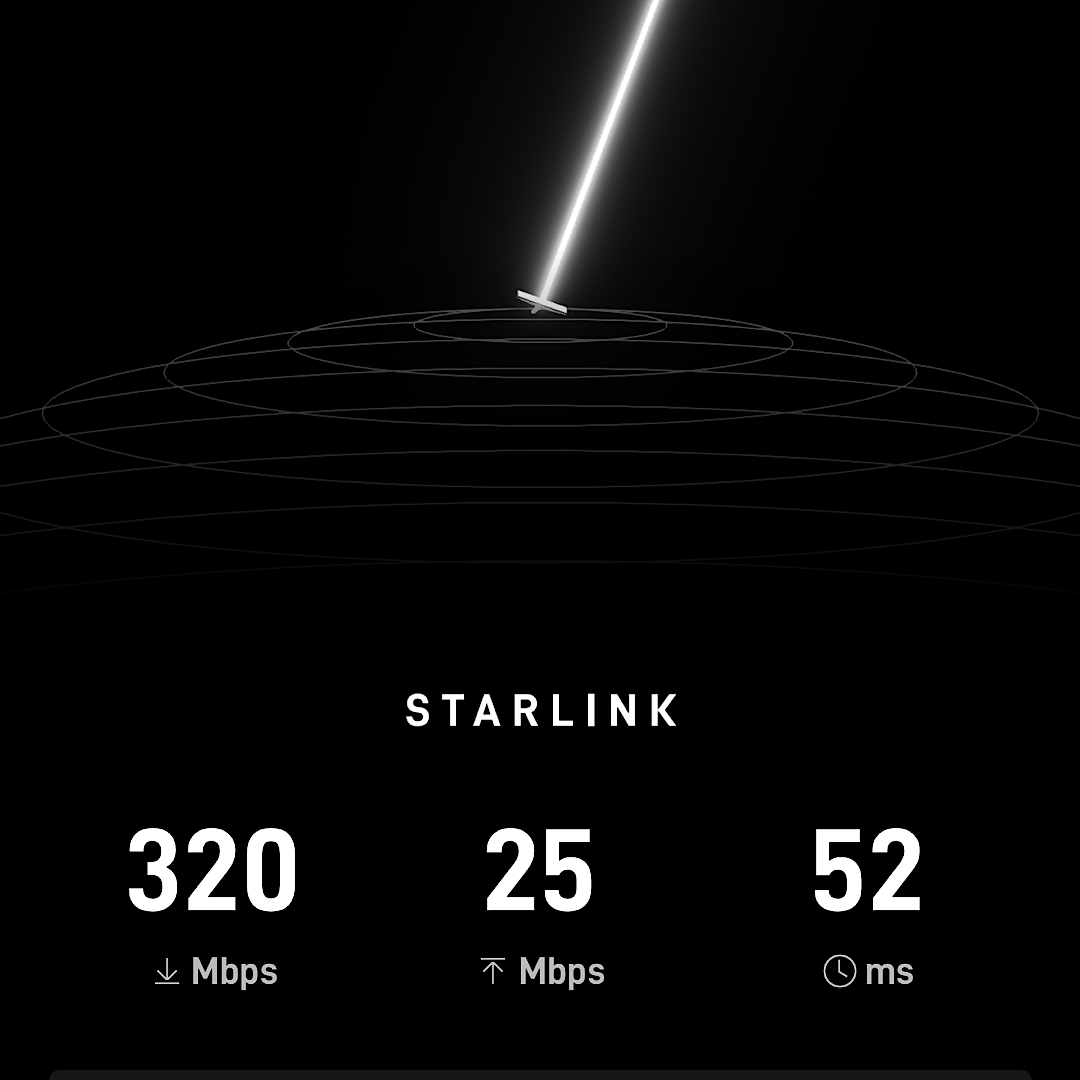
In the countryside of Tuscany, mobile data coverage can sometimes be weak or even nonexistent, especially in more remote areas. Additionally, not all hotels or accommodations offer strong or reliable internet connections. If you’re planning to stream movies or play online games like Fortnite, it’s possible the network might not be fast or stable enough.
I mounted the Starlink Mini to the interior glass roof of my Tesla Model Y. I wanted to test how well Starlink performs in challenging conditions, even when the placement and orientation aren’t always ideal.
I took the Starlink to the pool area and placed it in random spots without paying much attention to optimal positioning or alignment. I wanted to see how it performs without perfect setup conditions.
Of course, you need a suitable power source for the Starlink to work, since by default it comes with a 240V AC power adapter in Europe. I had a compact portable EcoFlow unit with me, which was the smallest of its kind. Naturally, any similar product on the market would work just as well for this purpose.
I was pleasantly surprised by how effortlessly the Starlink powered on and just started working. There was no complicated setup – it simply connected and got online. I was writing blog posts and also using several bandwidth-heavy applications without any issues. Below is a screenshot of the Starlink’s performance, taken just about a minute after I turned it on by the pool area.

Using Starlink in a Car
Starlink generally works surprisingly well inside a car, especially when placed near the front windshield or under a panoramic glass roof, such as in a Tesla. Signal reception is decent as long as there’s some visibility to the sky. However, I’ve encountered a few issues when the interior temperature of the car gets very hot.
In my case, the glass roof of the Tesla became so hot under direct sunlight that I couldn’t even touch it with my hand — and in those extreme heat conditions, Starlink stopped working reliably. This seems to be related to thermal limits of the hardware.
That said, this is not a problem while the car is moving and the air conditioning is on. The temperature inside stays reasonable, and Starlink works fine. But if the car is parked for a while in full sun — for example, in Italy in July — and the AC is off, you can definitely run into issues with Starlink overheating or dropping connection.
Also, depending on the country (Italy, for example), there are a fair number of tunnels, so connection will drop temporarily due to lack of line-of-sight to the satellites.
Despite these limitations, I’ve been very satisfied with Starlink for mobile use, especially in remote areas like the Dolomites, where no other options were available. For off-grid travel or remote work, it’s an excellent solution — just be aware of the environmental conditions.
Starlink Mini Price and Data Plans
Official U.S. retail price: US $499 for the Mini kit (portable antenna + built-in router)Walmart+15Starlink+15SatelliteInternet.com+15Reddit.
In some countries, the Mini is even less (around US $200–$299), with U.S. prices historically set higher—likely a result of testing pricing strategies .
It appears that the pricing for Starlink’s Roam data plans varies quite a bit depending on the buyer’s home country. For example, I was able to get the Unlimited Roam plan for around €85, while the limited 50 GB plan would have cost about €50.
Of course, whether this feels expensive or reasonable depends on your own needs and circumstances. Personally, I find the price to be fair, and I definitely get value from it — especially in remote areas where there are no good alternatives.
One of the great things about the Roam plan is that it can be paused at any time, which makes it really flexible for seasonal or travel-based use.